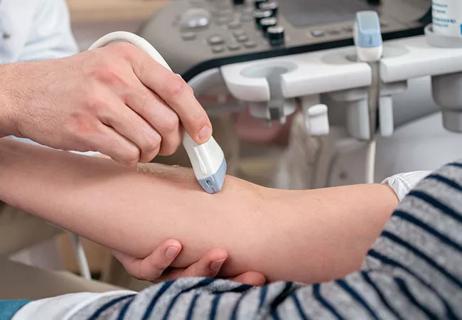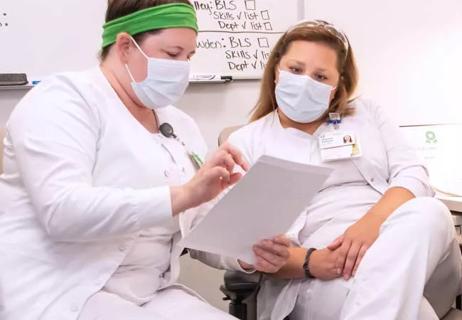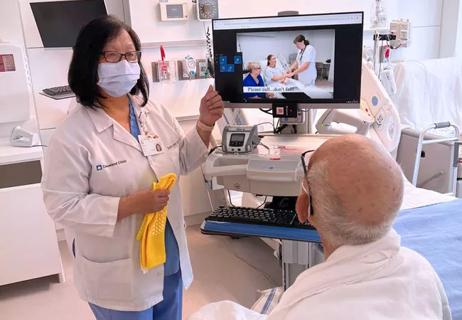As a nurse practitioner in an internal medicine practice for 18 years, Patricia A. Marin, DNP, NP-C, understands the value advanced practice nurses bring to patient care. “Working in a primary care setting, I’ve always been a champion of chronic disease management,” says Dr. Marin, who works at Cleveland Clinic’s Richard E. Jacobs Health Center. In her practice, Dr. Marin runs a tobacco cessation clinic and co-manages patients with diabetes, heart disease and other chronic conditions.
Cleveland Clinic is a non-profit academic medical center. Advertising on our site helps support our mission. We do not endorse non-Cleveland Clinic products or services. Policy
This work, in addition to more than a decade of cardiovascular nursing at Cleveland Clinic’s main campus, compelled Dr. Marin to undertake a research study. “I wanted to document my quality outcomes working as a specialty-trained nurse practitioner with a cardiovascular background in an internal medicine group,” she says.
Dr. Marin completed a comparative study of hemoglobin A1c (HbA1c) reduction at 6-, 12- and 24-months by primary care provider type along with Nancy M. Albert, PhD, CCNS, CHFN, CCRN, NE-BC, FAHA, FCCM, FHFSA, FAAN, ACNO of Nursing Research and Innovation, and James F. Bena, MS, a statistician with Cleveland Clinic’s Department of Quantitative Health Sciences.
“Our aim was to assess the differences in hemoglobin A1c over time in diabetic patients treated by internal medicine physicians using the chronic care model (IMP-ancillary) or advanced practice nurses (APN-IMP),” Dr. Marin explains.
During the retrospective study, Dr. Marin examined three years of medical records for patients aged 18 to 85 years with diabetes at her ambulatory care medical center. Cases were reviewed based on provider type (IMP-ancillary and APN-IMP), and patients were matched to providers by age, gender and race.
The study cohort included 269 patients – 93 APN-IMP and 176 IMP-ancillary. Dr. Marin considered two research questions:
Comparison of the data yielded three primary findings:
Dr. Marin’s research has been accepted for publication by “Primary Care Diabetes,” the journal of Primary Care Diabetes Europe. She is optimistic about the implications of her work on the role of nurse practitioners.
“When you look at busy internal medicine practices, there are a lot of issues surrounding access to care,” says Dr. Marin. “Our research validates that nurse practitioners not only help improve outcomes for patients with chronic diseases, but also can help offset some of the workload of busy physicians, allowing them to see more high-acuity patients.”
Cleveland Clinic’s 14th annual Nursing Research Conference is May 2 – May 3. Register now!

Study shows ultrasound can be valuable tool for improving patient satisfaction by reducing failed IV insertions

New system uses vital signs to predict need for further intervention

Findings reveal personal and professional factors that influence nurses’ interest in medical research

Nurse scientists bridge divide between bench and bedside

Individual and population factors play a role

Study looks at cardiopulmonary arrest and activation rates

Video education and nurse-led reinforcement help with fall risk awareness

Further research into collaborations may help strengthen nursing science